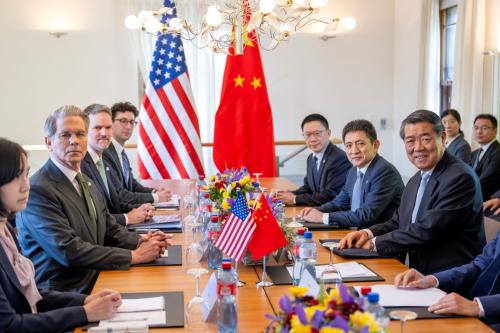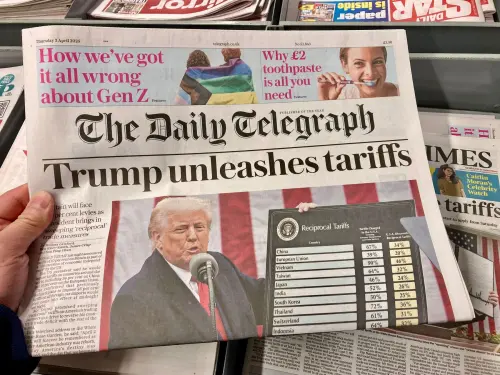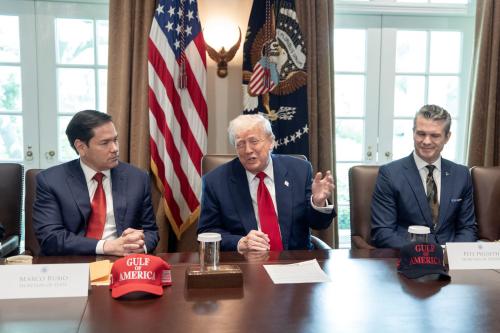Introduction
As the U.S. tightens trade and investment restrictions with respect to China and invests in developing critical sectors such as semiconductors, electric vehicles (EVs), and clean energy, deeper cooperation between the U.S., Canada, and Mexico under the United-States-Mexico-Canada Agreement (USMCA) is needed. The USMCA gives businesses and traders certainty about the economic relationship between the three countries, and the long history of their cooperation should make North America the key economic platform for a more competitive and dynamic economy that is best placed to reduce exposure to Chinese supply chains and compete globally. However, in order for this to happen, USMCA countries need to work together to address the gaps that have opened between U.S. trade and investment restrictions on China and Mexico and Canada’s trade and investment settings. Going forward, the U.S. should coordinate more closely with Canada and Mexico on any new trade and investment restrictions applied to China. The fact is that for the U.S. to effectively de-risk its economic relationship with China, a more coordinated North America approach is required. Failure to build a cohesive North American approach will likely lead to the U.S. adopting a more go-it-alone, less effective approach when it comes to China, and would be a missed opportunity to further strengthen North American economic relations.
The economic importance of North America
Trade and investment across North America underpinned by the USMCA is the most important economic relationship for the US, Mexico and Canada. Over $1.8 trillion dollars in annual trade happens between these three countries, accounting for approximately 17 million jobs. Around 75% of Canada’s exports and 78% of Mexico’s exports are to the U.S., and around 33% of U.S. exports go to Canada and Mexico. As a result, North America is a geography of deeply interconnected supply chains, particularly in automotive, but also medical equipment, IT products, pharmaceuticals, chemicals, and more.
De-risking the US economic relationship with China
The U.S. goal of reducing its economic interdependence with China—so-called de-risking—is a key focus for the U.S. that will likely only intensify. To this end, the U.S. has adopted a range of trade and investment restrictions on China. These include tightened inbound investment screening, new requirements on U.S. investors to notify the U.S. Treasury Department about investment into China into particular sectors, export controls that include restrictions on access to U.S. technology used to produce high-end semiconductors, and tariffs. Recently, the United States Trade Representative (USTR) completed its Section 301 review of the U.S.-China tariffs which led the Biden administration to increase tariffs on $18 billion of imports from China, which included increased tariffs on semiconductors, 100% tariffs on EVs, and higher tariffs on EV batteries, to name a few.
A new North American approach to China?
While the U.S. has been working to restrict trade and investment with China, Canada and Mexico have not taken similar measures. For instance, Mexico does not have an inbound investment screening regime and Canadian and Mexican tariffs on Chinese imports are in many cases significantly lower than U.S. tariffs. These differences in trade policy toward China is increasingly in tension—economically and politically—with the very open trade economic relationship under USMCA. The central issue is that U.S. action to reduce Chinese access to its markets and technologies can be undermined should China increase trade and investment with Mexico and Canada in order to enter the U.S. market while avoiding U.S. trade and investment restrictions. For example, exports from Mexico of EVs from facilities owned by Chinese EV maker BYD could enter the U.S. under USMCA and pay zero tariffs if it meets the agreement’s rules of origin, regional steel and wage rate requirements, and could also benefit from the $7500 IRA tax credit for EVs assembled in North America. Alternatively, BYD could still export EVs to the U.S. from Mexico and pay the WTO MFN rate of 2.5% for automotive imports, compared to the 100% tariff rate the U.S. would apply to imports of EVs directly from China.
Developing a North American EV sector should be the goal for all USMCA parties, leveraging the already deep automotive supply chains. For instance, in 2022, over 50% of Mexico’s imports of parts and accessories for motor vehicles came from the U.S. Accelerating the mining of critical minerals in Canada and Mexico, expanding refining capacity, and building battery manufacturing will also be needed.
Yet to ensure that the U.S. continues to see EVs (as one example) as an industry that should be built out across North America, gaps in economic policy toward China between the U.S., Canada, and Mexico need to be addressed. In the case of EVs, this could include Mexico adopting an inbound investment screening regime and Mexico and Canada adopting tariffs similar to the U.S.’s on EVs from China.
The central issue is that U.S. action to reduce Chinese access to its markets and technologies can be undermined should China increase trade and investment with Mexico and Canada in order to enter the U.S. market while avoiding U.S. trade and investment restrictions.
Some progress under USMCA
Thankfully, it does appear that closer cooperation on China is starting to come into focus for the three governments. At the fourth annual meeting of the USMCA Free Trade Commission (FTC) on May 22 led by USTR Ambassador Katherine Tai, Canadian Trade Minister Mary Ng, and Mexican Secretary of Economy Raquel Buenrostro, how North America can cooperate more effectively to address the China challenge was a consistent theme.
For example, the parties agreed to “jointly expand their collaboration on issues related to non-market policies and practices of other countries, which undermine the Agreement and harm U.S., Canadian, and Mexican workers, including in the automotive and other sectors.” The nonmarket economy of most concern is China, and responding to China’s trade practices and broader global impact of its economic model will be key to ensuring that the investment by the U.S., Canada, and Mexico into their EV sectors are not undermined by imports of heavily subsidized EVs and components from China.
Another area of cooperation identified in this FTC meeting was building on a previous agreement by the three governments to develop better ways to cooperatively respond to emergency situations that impact trade flows. During COVID-19, a lack of coordination led initially to trade across North America shutting down. Strengthening processes for cooperation across North America can help each government respond to future pandemics and other emergency disruptions to trade, including those caused by rising tensions with China. The underlying point here is the opportunity and need for North American cooperation in order to strengthen collective economic security.
A third area of focus in this FTC meeting was agreement to do more together to prevent imports of goods produced with forced labor. This is a commitment that all parties have made under the USMCA. The main focus here for the U.S. has been preventing imports of goods from the Xinjiang region made using Uighur labor, and the U.S. has legislation that addresses this specifically. However, much work remains to be done, including increased transparency into supply chains. North American cooperation on these labor issues would send a strong signal about shared values in North America around slave labor and labor rights more broadly.
Recommendations
Deepening cooperation among the U.S., Mexico, and Canada when it comes to China is needed to ensure that the USMCA and the open trade and investment regime it enables is supportive of intensifying economic competition with China. Failure to cooperate more deeply on how to respond to China risks the U.S. adopting a more go-it-alone approach. The outcomes from the recent USMCA FTC meeting are a good step toward deeper cooperation on China, however a more comprehensive approach is needed. This could start with the three governments working together, along with industry and other stakeholders, in reviewing their economic policies toward China, identifying where differences in economic policy create risks of Chinese goods entering each of their markets through one of the other partner markets, particularly in sectors deemed critical from a national security and economic security perspective. Assessing what could then be done to plug these gaps would help to develop a more coordinated approach to North American economic policies concerning China. Making progress here would strengthen North America as an economic unit and underscore for the U.S. that its economic well-being and strategic goals are best achieved by working within North America, rather than going it alone.
The Brookings Institution is committed to quality, independence, and impact.
We are supported by a diverse array of funders. In line with our values and policies, each Brookings publication represents the sole views of its author(s).







Commentary
The US, Canada, and Mexico need a more coordinated approach to their trade relationships with China
June 7, 2024